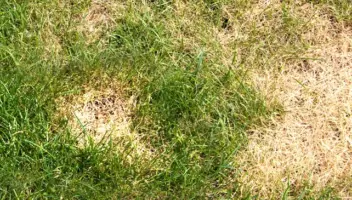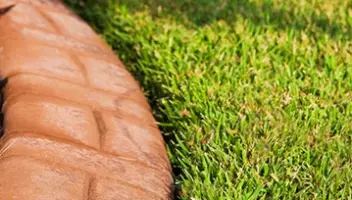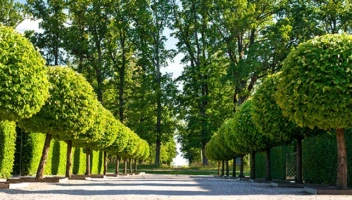How to Prepare Garden Soil for Planting

Growing a successful garden full of healthy plants is not possible without healthy soil. When garden soil is in its tip-top condition, it is no longer as reliant on pesticides and fertilizers. Garden soil that is in excellent form usually appears fluffy and loose and is comprised of plenty of minerals that are necessary for plant growth. It also contains living organisms such as fungi, bacteria, and earthworms that help maintain soil quality and keep it nutritious.
If you’re a beginner gardener or have enjoyed gardening for years, you may be wondering how to determine whether or not your soil is healthy and what to do in the case that it is not. Well, you’re in luck because LeafFilter created this handy guide to teach our readers how to prepare garden soil for planting and reach optimal soil health.
Determining Soil Health
There are about 17 elements that are vital for plant health. Potassium, nitrogen, and phosphorus are referred to as macronutrients because plants consume them from the soil in the largest quantities. While the macronutrients are most important for soil health, secondary nutrients such as magnesium, sulfur, and calcium are also essential. Aside from the total amount of nutrients soil has, soil health is also determined by figuring out its pH reading or acid-alkaline balance.
Soil Testing
In order to determine what nutrients your soil has and which ones it’s lacking, soil testing, especially in the spring or fall is a great idea. You can purchase a soil kit test from a local home improvement or hardware store to measure levels of phosphorus, magnesium, calcium, potassium, nitrogen, and sometimes, pH levels.
pH Levels
pH levels are a vital aspect of soil health. If pH level is not included in your test, you can purchase a pH meter. pH levels influence a number of different factors that affect plant growth. These factors include nutrient availability, soil structure, toxic elements, nutrient leaching, and soil bacteria.
A pH level of 7.0 is neutral while values below 7.0 are known as acidic and values above 7.0 are alkaline. The desirable pH range for optimal plant growth varies from crop to crop. While some crops grow best in the 6.0 to 7.0 range, other plants require more acidic conditions.
If you’re planting potatoes or blueberries, pH range is best in the 5.0 to 5.5 range. However, when planting soybeans, corn, peanuts, watermelon, wheat, barley, rice, and cotton, pH range is best between 5.5 and 6.5. For plants such as sugar beets, clovers, and alfalfa, you should opt for a pH level between 6.0 and 7.0.
Once you uncover the pH levels in your soil and figure out what types of plants you’d like to grow, you can adjust soil pH to suit your specific garden. If you find that your garden soil is too acidic and below 7.0, you will need to add ground limestone. Garden soil that is above 7.0 and too alkaline will need sulfur.
Organic Compost
Compost and other types of organic materials clasp soil particles together in order to absorb moisture. They also store and retain nutrients that then become available to other plants. To improve almost any type of soil, adding organic compost is a must.
By mixing in compost, the texture of clay and silty soils instantly become better. You can purchase organic compost at a home improvement or garden supply store or create it yourself at home. If you choose to make your own compost, simply pile brown layers of leaves and straw and green layers of livestock manure, food waste, and grass clippings on top of one another. Be sure to turn the pile often and keep it as moist as possible.
Garden Mulch
Organic mulch insulates the soil from extreme temperatures. It also hinders weed growth and minimizes water loss through evaporation. Organic mulch breaks down in a slow manner, and cultivates the soil with organic matter. Examples of organic mulch include shredded bark, hay, grass clippings, and straw.
Inorganic mulch is effective in deterring weed growth and preventing fast evaporation. While organic mulches must be replaced on a yearly basis, inorganic mulch does not. However, the downside of inorganic mulch is that it is unable to break down the soil and add organic water to improve the nutrient content and structure of the soil. Inorganic mulch can be composed of landscape fabrics, gravel, and pebbles. To improve your soil structure, opt for a high-quality, clean mulch that is free of seeds.
Fertilizer
Sometimes, fertilizer is necessary for soil that is not furnished with the right amount of essential nutrients that are required for optimal growth. Even garden soil that is in excellent condition needs fertilizer because as plants grow, they take in nutrients and in turn, leave soil less fertile.
The two types of fertilizers out there are organic and synthetic. Organic fertilizers are made up of natural mineral deposits and organic material like composted manure or plant meal. They should be applied in the fall so that their nutrients will be ready for use in the spring. Organic fertilizers improve soil structure while stimulating microorganisms in the soil. In the majority of instances, organic fertilizers will supply the soil with all of the micronutrients your plants require.
Synthetic fertilizers contain chemically processed raw materials. Since synthetic fertilizers are water soluable, they can instantly be absorbed by plants. Therefore, applying excessive amounts of synthetic fertilizer can damage your plants by burning foliage. We recommend that gardeners looking for the best long term health of their gardens, use organic fertilizers.
Air
Like humans, plants need air in the soil and above the ground for photosynthesis. Soil air consists of atmospheric nitrogen that is convertible into a usable format for plants. In addition, soil oxygen is necessary for soil organisms that make it possible for plants to survive.
Good garden soil provides the perfect amount of room between its particles to hold the air that the plants will utilize. While heavy and silty clay soils are equipped with small particles that are held close together and offer little air, sandy soils contain particles that are too big and offer an excessive amount of air. To balance air supply, you should add organic matter such as compost to your soil. Additionally, make an effort to avoid using heavy equipment, working in wet soil, and
Water
Soil organisms and plants also need water to survive. Garden soil that is healthy should contain about 25% water. In sandy soils, water drains too quickly and is not capable of being used by plants. In dense, clay soils, all of the pore space is full of water and can suffocate the soil organisms and plant roots. Soil that is in great condition has both large and small pore spaces. To improve the structure of your soil and hold in water so that plants can use it when needed, adding organic matter will help.
The tips listed above will give your garden the soil health it deserves. In return, you’ll enhance the quality of your crops, control weeds from sprouting, improve soil fertility, and control pests. For more gardening tips, check out our other informative blog articles.


